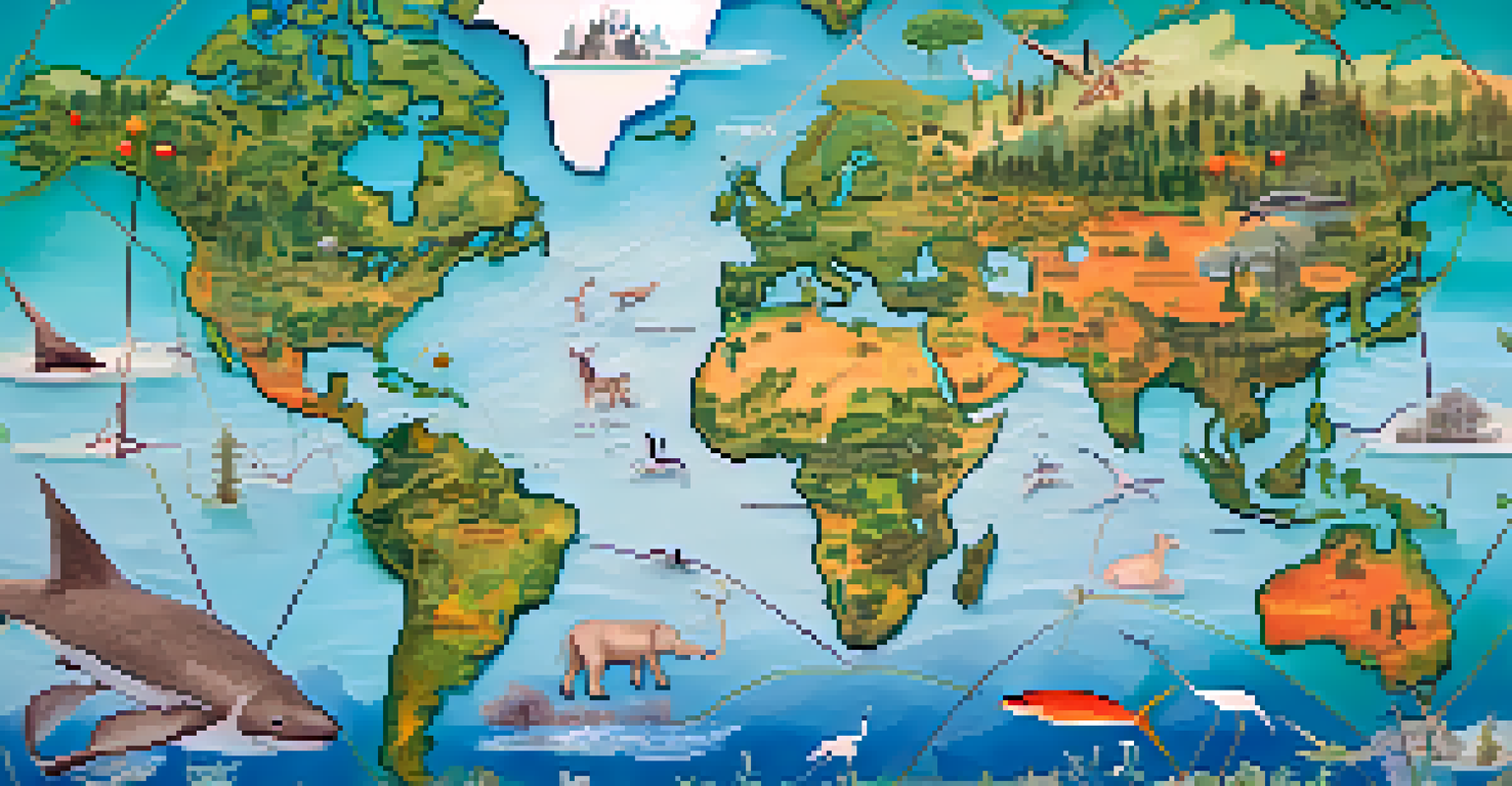Role of Climate Change in Emerging Infectious Diseases

The Connection Between Climate Change and Health Risks
Climate change is not just an environmental issue; it significantly impacts public health. As temperatures rise and weather patterns shift, the habitats of many infectious agents and their vectors, like mosquitoes, are altered. This shift can lead to the emergence of diseases in regions where they were previously absent, creating new health risks for populations.
Climate change is a threat multiplier. It exacerbates existing health problems and creates new ones, leading to a vicious cycle of health disparities.
For instance, diseases like malaria and dengue fever are expanding their reach due to warmer climates. These conditions enable mosquitoes to thrive in areas that were once too cool for their survival. As a result, individuals in these new regions face unfamiliar threats, highlighting a direct link between climate change and health.
Understanding this connection is crucial for public health planning and disease prevention strategies. It emphasizes the need for a multidisciplinary approach that includes environmental science, public health, and community education to tackle emerging infectious diseases.
How Changing Weather Patterns Affect Disease Outbreaks
Weather patterns play a critical role in the spread of infectious diseases. Increased rainfall and flooding can create ideal breeding grounds for mosquitoes, while drought can stress animal populations, leading to increased interactions with humans. These changes can trigger outbreaks of diseases that were previously contained.

For example, following heavy rains, outbreaks of leptospirosis, a bacterial disease, can occur as the bacteria thrive in waterlogged conditions. Similarly, warmer temperatures can enhance the lifecycle of pathogens, leading to more frequent outbreaks. This demonstrates how closely intertwined our climate is with disease dynamics.
Climate Change Impacts Health
Rising temperatures and shifting weather patterns are expanding the habitats of infectious agents, increasing health risks like malaria and dengue.
By monitoring weather patterns and their effects on disease spread, public health officials can better prepare for and respond to potential outbreaks. This proactive approach can save lives and limit the economic impact of large-scale health crises.
The Role of Animal Migration in Disease Transmission
Climate change is altering migration patterns of animals, which can significantly impact disease transmission. As animals, particularly birds and mammals, migrate to find suitable habitats, they can introduce new pathogens to different ecosystems. This intermingling increases the chances of zoonotic diseases, which are diseases that jump from animals to humans.
The greatest threat to our planet is the belief that someone else will save it.
For instance, as warmer temperatures cause certain bird species to expand their range, they may carry viruses like West Nile or avian influenza to new areas. This increases the risk of these diseases spreading to human populations that have never encountered them before. The movement of wildlife thus serves as a critical vector for emerging infectious diseases.
Recognizing the implications of animal migration is vital for developing effective surveillance systems. By tracking these movements, public health agencies can identify potential hotspots for disease emergence and implement preventative measures.
Human Behavior: A Catalyst for Disease Spread
Human behavior is another factor that influences the spread of infectious diseases in the context of climate change. As people adapt to changing environments, they may encroach on wildlife habitats, increasing the likelihood of disease spillover. Urbanization, deforestation, and agricultural expansion can disrupt natural barriers that previously limited disease transmission.
For instance, the encroachment of humans into rainforest areas has been linked to outbreaks of diseases like Ebola. By altering landscapes and reducing biodiversity, humans create conditions that can foster disease emergence. This highlights the importance of considering human activities when addressing the impacts of climate change on health.
Animal Migration Spreads Diseases
Changing migration patterns due to climate change can introduce new pathogens into different ecosystems, heightening the risk of zoonotic diseases.
Education and awareness about our role in disease spread can empower communities to take action. By promoting sustainable practices and protecting natural habitats, we can mitigate the risks associated with emerging infectious diseases.
The Importance of Surveillance and Monitoring
Effective surveillance and monitoring systems are crucial in combating the spread of infectious diseases influenced by climate change. With the rapid changes in climate and ecosystems, traditional methods may not suffice. Innovative approaches that integrate environmental data with health information are necessary to track emerging diseases effectively.
For instance, using satellite imagery to monitor changes in land use can help predict potential outbreaks. By identifying areas at risk due to climate-related factors, public health officials can allocate resources more effectively and implement preventive measures before diseases spread.
Investing in technology and data analytics for disease surveillance can significantly enhance our response capabilities. This proactive strategy not only protects public health but also contributes to global efforts to combat the effects of climate change.
Community Resilience in the Face of Emerging Diseases
Building community resilience is essential to address the challenges posed by climate change and emerging infectious diseases. Local communities play a pivotal role in implementing health strategies and responding to outbreaks. Empowering them with knowledge and resources can lead to more effective disease prevention and control.
For example, community-led initiatives, such as local health education programs, can raise awareness about the risks associated with climate change. These programs can also promote practices such as proper sanitation and vector control, which are vital in reducing disease transmission.
Community Resilience is Key
Empowering local communities with knowledge and resources is essential for effective disease prevention and fostering resilience against climate-related health threats.
By fostering strong community ties and encouraging active participation in health initiatives, we can create a more resilient society. This grassroots approach not only enhances public health but also strengthens community bonds in the face of adversity.
Global Collaboration for a Healthier Future
Addressing the intersection of climate change and infectious diseases requires global collaboration. Diseases do not recognize borders, and as climate change intensifies, the potential for outbreaks increases worldwide. International cooperation is essential to share knowledge, resources, and strategies in combating these emerging threats.
Organizations like the World Health Organization and the Centers for Disease Control and Prevention play crucial roles in coordinating efforts. By fostering partnerships among countries, we can develop integrated approaches that address both climate and health issues simultaneously. This global perspective is vital for effective disease prevention.

Ultimately, a united global front can lead to more robust health systems and better preparedness for future challenges. By combining resources and expertise, we pave the way for a healthier future amid the uncertainties of climate change.